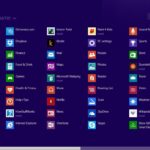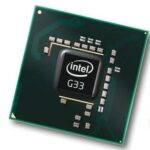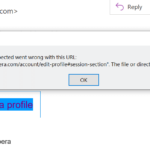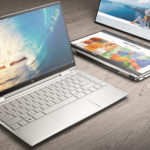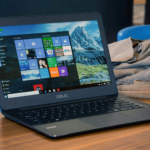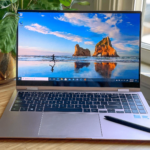You can’t deny the fact that the use of external monitors with a laptop has been a mainstay for hardcore gamers. We know you want to use it but aren’t ready to take the plunge yet. It’s a no-brainer that the increase in screen real-estate is appealing, especially now that laptop screen sizes continue to shrink and get smaller through design innovation making portability the primary priority.
With that said, one concern that remains unanswered is, will the external monitor increase FPS while gaming? Or it’s going to be the other way round? Let’s find out…
First things first, an external monitor when connected to laptops will not impact the performance in most cases. For starters, the external monitor gets media information from your laptop’s graphics card as a mirroring signal.
This signal is then transferred to the monitor via an HDMI or VGA cable. However, this arrangement may not be beneficial for performance (at least in some instances) if the screen size and resolution do not align with what the graphics card is designed for!
On the flip side, this could leave GPU resources drained and lead to poor performance or even damage for the GPU even to display both equally negative scenarios.
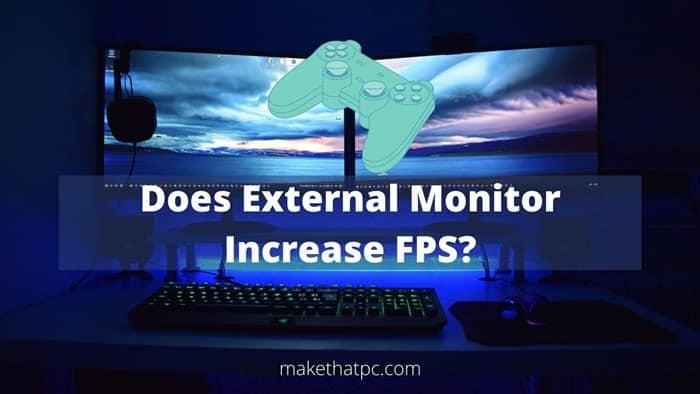
Does Connecting an external Monitor Affect FPS in laptop?
You will find a lot of complex explanations about it. But, the simple thing is that your laptop is offering a high FPS all the time reaching the maximum refresh rate of your laptop screen, you will probably see an FPS increase using a monitor with a higher refresh rate.
For example, if your laptop is offering 60 FPS continuously and your laptop’s display is just 60 Hz. With a monitor with 75Hz or more, you will see an improvement in FPS for sure. Now, this happens because of a technology called Optimus used in NVIDIA systems. So, if your laptop is making use of a discrete graphics card from NVIDIA, you will see great results in FPS improvement.
Now, there is another caveat to it. Some laptops will have their video out connected to the integrated GPU and not your NVIDIA discrete card. In this case, using an external monitor will not help your get more FPS.
You can check this thing by going to Desktop(Right Click)>>NVIDIA Control Panel>>Configure Surround Physx(On Left Column).
If you see that the monitor is connected to your discrete graphics card, you can expect some boost in FPS with an external monitor. However, in most of the cases, you will see a little FPS boost but not too much.
Do I Need More RAM For The External Monitor?
Since adding an external monitor might affect the laptop’s performance, you’d think that adding more RAM would make up for it. Let’s find out if that’s just a myth….
Theoretically speaking, staking more RAM should do the trick, as the GPU uses more processing power when an external monitor is utilized. So, we can say having more RAM will help reduce stuttering and slow-downs in games.
However, it all boils down to your laptop configuration, and whether or not it will be able to handle more RAM. We recommend you do some research on this before you buy more RAM for your laptop.
Does Laptop Connectivity To An External Monitor Affect My Battery Life?
You know by now that connecting an external monitor is bound to affect the GPU, CPU, and even the laptop’s battery life since your processor needs to withstand more strain.
With that said, it’s crucial to make sure you know the proper always to connect your external monitor via an HDMI or a VGA cable to play at top frame rates. If you have two screens running together, the monitor resolutions can be reduced due to the absence of ports on your laptop.
If you’re frequently on the move, you know laptops aren’t typically famous for their battery life. Truth be told, even some of the modern-day laptops can last only about an hour if you’re performing any serious work such as gaming or video editing.
Now, if you use multiple screens, the game’s FPS may be reduced if your laptop’s graphics chip isn’t strong enough to render your required resolution. In general connecting external monitors is likely to lower performance and affect the battery life. However, it depends on how good your hardware is in most instances.
We recommend you to use a game profile in Radeon(TM) Settings – an AMD application that enables users using AMD GPUs to optimize all aspects of the game.
Is It Easy To Play If I Use An External Monitor?
It’s a no-brainer that playing with your external monitor attached is much more efficient than your tiny laptop screen. It allows gamers like you to view a larger portion of the map simultaneously and observe enemies that might be trying to sneak up on you from blindsight.
The general rule of thumb is larger screens are convenient for an easier view of what’s going on. It can significantly impact your in-game experience and provide you with an advantage against opponents.
In case you’re planning on connecting more than one screen, then up to three screens are ideal because it allows a player to get a clear view of maps and the status bar of their character in-game.
Added to that, having more RAM for your media source will mean more power for your computer. It is because your OS doesn’t have to shift data between external and internal memory continuously.
All in all, if your gaming rig is set up to play with multiple monitors, more RAM will boost gaming performance, lessen stuttering, and lower frame loss when you’re enjoying your gaming session at higher resolutions.
Will My External Monitor Use RAM?
Generally speaking, laptops with external monitors do not use RAM except for the use of video cards that are designed for dual-monitor setups.
If you’re connecting the external display to your laptop, we assume that you have added a video card to your laptop. However, if you have too many monitors connected, this can overflow the memory of your system’s RAM. Also, then your setup will demand more support from your graphics cards to consume more PSU capacity than normal, which is not good for your system.
Overall, external monitors have nothing to do with RAM. However, for high-end gaming, it is necessary. With that said, if you have multiple monitors, you’ll need enough RAM for the computer’s operating system to handle everything efficiently.
Can My External Display Be Used To Experience Dual-Display Gaming?
If you’re planning to connect an external display for gaming laptops, less expensive laptops might not be able to support this. Still, most gaming laptops on the market nowadays will be capable of running a dual monitor setup with ease (hopefully).
We generally recommend pairing an external monitor and laptop for gaming, as the screen has been curated solely for this purpose.
Do keep in mind that two screens could cause your computer to slow down or stutter while you’re playing action-packed scenes because the computer must assign processing power to the two screens.
If you’re looking to install an external monitor in conjunction with a laptop, be sure you choose a monitor that’s designed for your machine. Also, please do some research to confirm that your system supports this before you purchase one.
To Conclude
To Wrap up, we’re not suggesting you own an external display to gain this performance boost. But if your laptop comes with the NVIDIA Graphics card and you think is getting bottlenecked by the limited refresh rate of your laptop’s monitor, you can try using an external monitor. As we discussed earlier, if the display output from your laptop going through the integrated graphics card, you will not see any benefit.
With that out of the way, ane external monitor isn’t just about the more screen real-estate but better frames per second like we’ve experienced during our tests. We leave the rest to you! Hope we could feed your curiosity with all legit answers…. thanks for reading!

I am Anshul Rana, an experienced author specializing in PC gear reviews and Windows 10 software tutorials. With a strong passion for technology and an in-depth understanding of the PC industry, I provide insightful and detailed analyses of computer peripherals, gaming gear, and software solutions. My writing style is concise yet informative, making complex topics accessible to both beginners and advanced users. Through my reviews and tutorials, I aim to offer valuable guidance, helping readers make informed decisions to enhance their PC experience and explore the vast possibilities of Windows 10 software.

